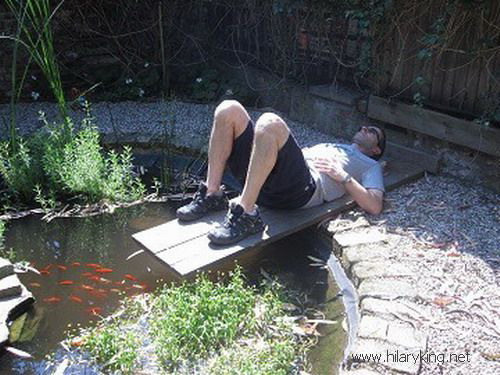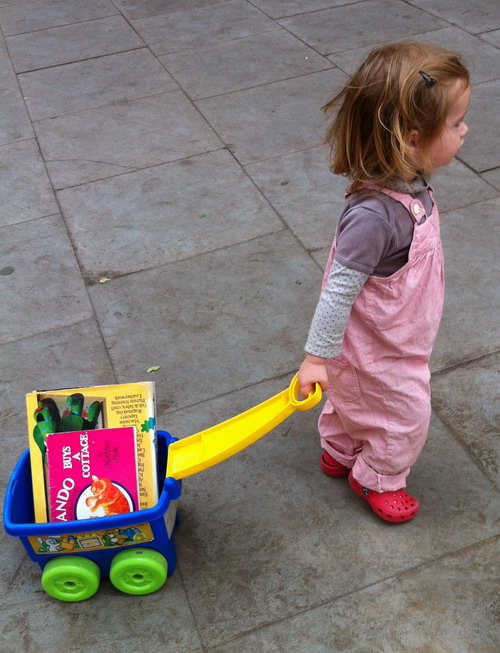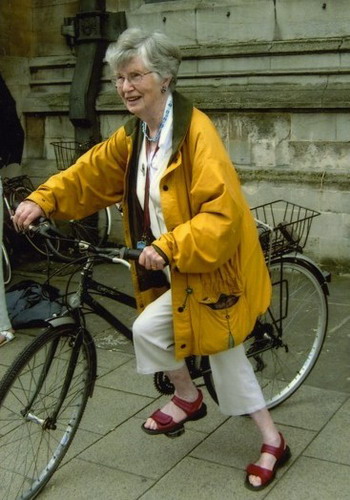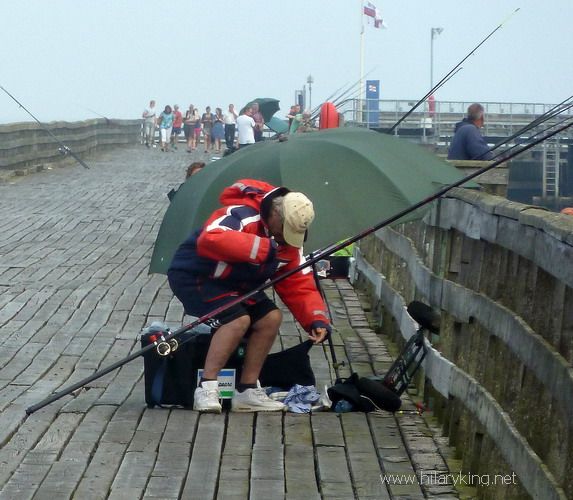After the Work – Enjoy your Garden
Mindfulness and the Alexander Technique
Mindfulness
Mindfulness is a topic that has been explored in the media of late. For instance, an article in the Sunday Times, ‘Breathe deep and mind how you go’ discussed the value of using mindfulness training as a way of helping school children who find it hard to cope with their various experiences of stress, including exams and “body image” pressures. Heads of high-performing schools are concerned at the ‘alarming rise in (pupils) suffering from mental health disorders’ and there is a move to build more resilience in children. This is admirable – but hopefully people are also addressing ways to reduce some of the pressures put upon these youngsters?
Some aspects of mindfulness training have similarities with aspects of the Alexander Technique. The Times article states that a number of schools use mindfulness training as a way of helping children ‘to act consciously and thoughtfully… rather than react with a kneejerk reaction’ and mindfulness ‘has proved effective in ameliorating young people’s mental and emotional difficulties’. This is something that is part and parcel of Alexander lessons, where we learn to inhibit unhelpful habitual reactions, so gaining more conscious control and more choice as to how we respond to situations.
Mindfulness training in classrooms helps children learn to notice their thoughts and feelings as they sit quietly and breathe deeply. Anthony Seldon suggests that ‘Every school in Britain could begin this journey back to sanity and self control by introducing two minutes of stillness every day’. Whilst this is a great beginning, just two minutes a day does sound somewhat minimal.
Mindfulness in Movement – Including Breathing
One of the beauties of the Alexander Technique is that part of the work is learning to develop what could be called ‘mindfulness in movement’, so that we aim to live our lives and perform everyday activities, including breathing, with more awareness. Becoming aware of our breathing and just observing it, as in some mindfulness training and in the AT is one thing. Being asked to make ourselves ‘breathe deeply’, as some people advocate, is another. It very much depends on HOW we breathe, as to whether or not this is helpful or, possibly, even harmful.
F. M. Alexander known as F.M.) was aware of how schools and the army used to advocate deep breathing exercises and he wrote extensively about the pitfalls of following any routine which used ‘end-gaining principles‘ to force the breath. For instance his paper ”The Dangers of Deep Breathing’ (1908) outlines how this frequently results in distortions and patterns of mis-use such as ‘lifting the chest and collapsing’ whilst trying to breathe deeply, which usually ’cause an exaggeration of the defective muscular co-ordination already present, so that even if one bad habit is eradicated, many others – often more harmful – are cultivated’ .
F.M. himself had breathing problems as a young man, which contributed to him losing his voice when he was reciting on stage. He described himself as breathing through his mouth so that he made audible ‘sucking and gasping noises’. In learning how to change these habits, F.M. began to develop the Technique as we know it today. Alexander was known by many as ‘The Breathing Man’ and he helped many people become better poised, with a coordinated use of their muscular mechanisms, so that their breathing could work smoothly and naturally. This is still a central part of Alexander lessons today.
William James, an early and influential psychologist is quoted, as having stated that an education that taught people how to focus their attention would be “the education par excellence” – whilst he could perhaps be describing mindfulness training, this could also describe the Alexander Technique as well. F.M. was very keen to apply his methods to the general education of children, so that they could avoid developing bad habits that might stay with them all their lives. In 1924 the ‘Little School’ was started with
the help of Irene Tasker, a Montessori and AT teacher and the children were given Alexander Technique lessons alongside ordinary schoolwork, so that they were taught how to be aware of their psychophysical functioning – that is, their thinking and body use – throughout their school day. Unfortunately the second World War interrupted the work of this school and it was not able to be re-started after the war ended. Today, a number of schools incorporate the Technique into the curriculum to great effect, as do music and drama colleges.
FM Alexander wrote of the problems of ‘mind-wandering’ and old habits which result in ‘thought-grooves’ but suggested that while we need to gain control of our thought processes we should ‘beware of so-called concentration‘ as it denotes conflict and leads to physical tension.
Instead, Alexander says:
‘We must cultivate… the deliberate habit of taking up every occupation with the whole mind… which necessitates bringing into play every faculty of the attention’. (The Alexander Technique – Essential Writings of F M Alexander selected by Edward Maisel 1974)
Now this, surely, is mindfulness in action and it enriches our lives.
NHS Overview of Alexander Technique
- Back Pain
- Headaches
- Mood swings
- Posture
- Repetitive Strain Injuries
- Stress
- Whiplash
Sitting Can Damage Your Health
The Health Hazards of Sitting
People who sit more are at greater risk for herniated lumbar discs. A muscle called the psoas travels through the abdominal cavity and, when
it tightens, pulls the upper lumbar spine forward. Upper-body weight rests
entirely on the ischeal tuberosity (sitting bones) instead of being distributed
along the arch of the spine.
But we do need to sit on our sitting bones! The main illustration in the article, of the slumped woman, does show too much weight going through the rear part of the sitting bones, which is not helpful and would be likely to cause lumbar back pain. However, if the pelvis were realigned to be more upright, the weight could be distributed through the spine, then transferred through the pelvis and into the central part of the sitting bones, or into the legs if standing.
Strangely, the illustrations showing people the ‘correct’ way to sit and stand, omit showing the pelvis and sitting bones altogether, so the person appears to be finely balanced on thin air and the tiny coccyx.
“There’s No Such Thing As A Right Position” FM Alexander
It is so easy to fall into wanting a quick fix and assume that standing or sitting up straight for sensible amounts of time and then taking exercise, will solve all problems. Well, while this strategy may help a bit, it’s quite possible to sit and stand in a rigid manner, for instance, which can build up tensions, restrict our breathing and may lead to other problems in the future. Stiffening like this is tiring and people usually can’t keep it up for long.
As Alexander himself put it when teaching:
“I am putting into gear the muscles that hold you up, and you are putting them out of gear and then making a tremendous effort to hold yourself up, with the result that, when you cease that effort, you slump down worse than ever”. (FM Alexander Aphorisms)
So it is not just about the positions we sit and stand in, but the manner in which we use our bodies during our activities that makes the biggest difference of all. We can learn to be aware of our body use, gradually putting our muscles ‘into gear’ so we find an easier and more balanced way of sitting and moving around that enhances, not damages, our health.
Applications of the Alexander Technique: Luggage
Everyday Activities:- Pulling a Case or Trolley
- Do I hold the luggage handle at the right height for me?
- Do I twist my torso as I drag the luggage behind me?
- Do I pull down on one side of my body?
- Do I rush through stations and airports tensely, carelessly, or with awareness?
- Do I grab the luggage, or thoughtfully take hold of it – and how do I lift it?
- Do I remember to stop and think before pulling or lifting something heavy – am I evenly balanced with a lengthened spine when I move or lift?
Improve Your Sleep
How Much Sleep do We Need?
An episode of the TV programme ‘Trust Me I’m a Doctor’ discussed the issue of sleep and an experiment that researched the question of how much sleep people need. It has been shown that people who have six hours sleep were sleep deprived and did not function as well when performing mental tasks, as those who had seven hours sleep. Also, that tests revealed a number of genes related to illnesses such as heart disease, were found in greater numbers in those research subjects that had less sleep. So it is obviously a good idea to aim to have at least seven hours sleep, in order to remain in good health.
It wasn’t just the length but also the quality of sleep that was discussed. High levels of alcohol can disturb our sleep and using computers which produce a blueish light from the screen late in the evening tends to over-stimulate our brains, resulting in poor sleep. Apparently you can download an App that changes the temperature of the screen to a more yellowish glow, which is less stimulating, so computer users might like to try that to see if it helps.
Improve the Quality of Your Sleep with the AT
There were not many suggestions on the programme as to how we can go about improving the quality of our sleep. However, there was a moment of synchronicity for me, as so often happens, when an AT pupil of mine came in the next day talking about the same issue (not having seen the programme). He said that since he started having Alexander lessons, ‘The quality of my sleep is much better and I’m less stiff in the mornings’.
You may ask, why is this? The fact that he is thinking more and more about the AT during his working day and that he regularly uses the lying down procedure, means that he is less tense and stressed at the time of going to sleep than he used to be. Using the lying down procedure just before going to bed can help us let of of the day’s tensions and can set us up for sleep. This allows us to enjoy a deeper and more refreshing sleep without the help of any drugs, which is great.
Unwinding
Many people ask me ‘what’s the best way to sleep?’ and I think this is a difficult question to answer as many people find they can only fall asleep in one particular position. Sometimes these positions may be very tightly curled up and actually cause discomfort by the morning.
How do you sleep? If you curl up tightly, the first thing you can begin to change, is to allow your body to soften and lengthen out within the position you are used to then, over time, you can learn to adapt how you go to sleep. Lying on the back allows your body to unwind and lengthen out without putting pressure on shoulders, your neck or your lower back – but don’t lie in semi supine to sleep, as bent knees will restrict the circulation in your legs if you stay like this for too long.
As you begin to drop off to sleep, you can think of your body becoming softer, freeing up your muscles and allowing yourself to unwind and lengthen out, taking a lovely gentle quietness with you as you drift off – you will probably sleep a lot better as a result.
Alexander Technique Helps Accidents and Shock
Using the Alexander Technique Helps with Accidents and Shock
Elisabeth Walker
Elisabeth Walker ~ December 1914 – 17 September 2013
will be buried at Westmill Woodland Burial Ground on Friday 5th October.
Alexander Technique Videos
YouTube as an AT Resource
Body Flexion in Alexander Technique
Body Flexion – Used When Fishing
The term ‘Monkey Position‘ is used in the Alexander Technique to describe a way of bending forwards by flexing the body, bending the knees and folding at the hip joints so that the spine can continue to lengthen rather than curl and shorten. It’s a great way to bend forwards, whilst making sure we protect our backs.



